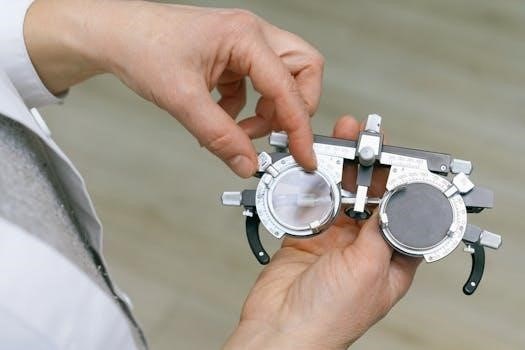6․7 Cummins Valve Adjustment⁚ An Overview
The 6․7 Cummins valve adjustment is a routine maintenance procedure․ Although the 24-valve system is designed for low maintenance, it is important to check the valve lash to ensure optimal performance․ Adjustments may be required․
Tools Required for Valve Adjustment
Performing a 6․7 Cummins valve adjustment requires some essential tools․ This includes sockets (22mm or 24mm), feeler gauges for accurate lash measurement, and a crankshaft barring tool (or alternative method) to rotate the engine․ Basic hand tools are necessary․
Socket Sizes (22mm or 24mm)
When preparing to adjust the valves on your 6․7 Cummins engine, having the correct socket size is crucial for loosening and tightening the lock nuts on the rocker arms․ Typically, either a 22mm or 24mm socket will be required, so it’s best to have both sizes available to ensure you have the right fit․ Using the correct socket size prevents damage to the lock nuts and ensures proper torque during the adjustment process․ Ensure your socket is in good condition and fits snugly to avoid slippage․ Double-check your specific engine model to confirm the exact socket size needed for your valve adjustment․
Feeler Gauges
Feeler gauges are essential for accurately measuring the valve lash during the adjustment process․ These thin, precisely calibrated metal strips are inserted between the rocker arm socket and crosshead to determine the clearance․ It’s crucial to have a set of feeler gauges that includes the specific measurements required for your 6․7 Cummins engine․ Ensure the gauges are clean and free from any bends or damage to get accurate readings․ Using the correct feeler gauge ensures that the valve lash is within the specified range, which is vital for optimal engine performance, fuel efficiency, and reducing engine noise․ Precise measurements are key!
Crankshaft Barring Tool (Alternative Method)
A crankshaft barring tool is designed to rotate the engine to specific positions for valve adjustment․ If a barring tool is unavailable, an alternative method involves removing the nuts on the fan shroud and using a socket on the crankshaft pulley bolt․ However, some express concern about potential risks when using the pulley bolts․ Exercise caution when using this technique․ Ensure that you slowly rotate the crankshaft and pay attention․ Using this method has risks but can be done․ This method is risky and can cause damage․ Always proceed with great care and awareness․

Preparing the Engine for Valve Adjustment
Before starting the valve adjustment on a 6․7 Cummins, ensure the engine is cool․ Also, disconnect the battery to prevent accidental starts and remove the cylinder head cover to access the valves․
Ensuring the Engine is Cool
Before beginning the valve adjustment procedure on your 6․7 Cummins engine, it’s crucial to ensure that the engine is completely cool․ Performing valve adjustments on a cold engine is necessary to obtain accurate measurements․ When the engine is warm or hot, the metal components expand, which affects the valve lash measurements, leading to incorrect adjustments․
Allow the engine to cool down completely, ideally to below 140°F (60°C), before proceeding․ This ensures that all components are at their standard size․ A cool engine will provide the most precise readings, ensuring proper valve operation and optimal engine performance․
Disconnecting the Battery
Before starting any maintenance or repair work on your 6․7 Cummins engine, it is extremely important to disconnect the battery․ Disconnecting the battery ensures that there is no chance of accidental engine startup while you are working on the valve train․ This safety precaution protects you from potential injury or damage․
To disconnect the battery, locate the negative terminal on the battery and use a wrench to loosen the nut securing the cable․ Once loose, carefully remove the cable from the terminal․ Secure the cable away from the battery terminal to prevent accidental contact during the valve adjustment procedure․
Removing the Cylinder Head Cover
The next step in preparing your 6․7 Cummins engine for valve adjustment involves removing the cylinder head cover․ This cover, also known as the valve cover, protects the valve train components and needs to be removed to access the valves for adjustment․
To remove the cylinder head cover, first locate all the bolts securing it to the cylinder head․ Use a socket wrench to loosen and remove these bolts․ Once all the bolts are removed, carefully lift the cylinder head cover off the engine․ Be sure to inspect the gasket for any damage and replace it if necessary to prevent leaks․
Valve Adjustment Procedure⁚ Overlap Method
The overlap method involves finding valve overlap on cylinders 1 and 6․ This process is used to accurately position the crankshaft․ It allows for precise valve lash adjustments on the 6․7 Cummins engine․
Finding Valve Overlap on Cylinder 1 and 6
To initiate the valve adjustment using the overlap method, pinpoint valve overlap on cylinder 1 or 6․ Valve overlap occurs when the exhaust valve is closing and the intake valve is opening․ Observe the rocker arms to identify this position․ As the exhaust valve nears its complete closure, the intake valve will begin its opening phase․ This simultaneous movement indicates valve overlap․
Precisely locating this point ensures accurate crankshaft positioning for subsequent valve adjustments․ Confirming overlap on either cylinder 1 or 6 is crucial for the overall success of the procedure․
Rotating the Crankshaft to Specific Positions
After finding valve overlap, rotate the crankshaft to specific positions to adjust the remaining valves․ Utilize a crankshaft barring tool or a socket on the crankshaft pulley bolt, exercising caution to avoid damage․ Rotate the crankshaft until the Top Dead Center (TDC) mark aligns with the 12 o’clock position․ If the rocker arms on cylinder number one are loose, proceed․ If not, rotate the crankshaft 360 degrees to reach the correct position․
These precise rotations ensure accurate valve lash measurements and adjustments on each cylinder, following the firing order of the engine․ This step is critical for achieving optimal engine performance․

Valve Lash Specifications
Valve lash specifications are crucial for proper engine function․ These specifications dictate the acceptable range for both intake and exhaust valves․ Adhering to these specifications ensures optimal engine performance, fuel efficiency, and reduced engine noise․
Intake Valve Lash Range
The intake valve lash range for the 6․7 Cummins engine is a critical specification that must be adhered to during valve adjustment․ According to available data, the intake valve lash should ideally be set to 0․010 inches (0․254 mm)․ However, a minimum of 0․006 inches (0․152 mm) and a maximum of 0․015 inches (0․381 mm) are acceptable․
Measurements within this range have no adverse effect on engine performance, emissions, fuel economy, or noise levels․ If measurements fall outside these limits, adjustment is necessary to ensure smooth operation․ Always refer to the specific engine’s service manual․
Exhaust Valve Lash Range
The exhaust valve lash range for the 6․7 Cummins engine is another critical specification to consider during valve adjustments․ The exhaust valve lash should ideally be set to 0․026 inches (0․660 mm)․ The acceptable range is between a minimum of 0․021 inches (0․533 mm) and a maximum of 0․034 inches (0․863 mm)․
These exhaust valve lash measurements within this range ensure proper engine performance, emissions control, and fuel efficiency․ If measurements fall outside of the specified limits, adjustments are required to restore the exhaust valves to their optimal settings․ Always consult the engine’s service manual․

Adjusting the Valves
Adjusting the valves involves loosening the lock nut and turning the adjusting screw․ Use feeler gauges to achieve the correct lash․ Tighten the lock nut, recheck the lash, and ensure it remains within the specified range․
Loosening the Lock Nut and Adjusting Screw
To begin the adjustment process, locate the lock nut on the rocker arm of the valve you intend to adjust․ Using a wrench, carefully loosen the lock nut while holding the adjusting screw in place․ This step is crucial as it allows you to make precise adjustments to the valve lash․ Once the lock nut is loose, you can then turn the adjusting screw either clockwise or counterclockwise to increase or decrease the gap between the rocker arm and the valve stem․ It’s important to make small, incremental adjustments and to use a feeler gauge of the correct thickness to measure the gap as you go․ Continue adjusting until the feeler gauge slides snugly between the rocker arm and valve stem, indicating that the valve lash is set to the correct specification․
Tightening the Lock Nut and Rechecking Lash
After achieving the desired valve lash, the next critical step involves securing the adjustment by tightening the lock nut․ While holding the adjusting screw in position to prevent any movement, carefully tighten the lock nut to the manufacturer’s specified torque․ Once the lock nut is snug, it’s imperative to recheck the valve lash with the feeler gauge․ This ensures that the tightening process hasn’t altered the adjustment․ If the lash remains within the acceptable range, the adjustment is complete for that valve․ However, if the lash has shifted, repeat the loosening, adjusting, and tightening steps until the lash is correctly set and secured․ This meticulous approach guarantees accurate valve timing and optimal engine performance․

Post-Adjustment Procedures
After adjusting the valves on your 6․7 Cummins, reinstall the cylinder head cover․ Reconnect the battery cables․ It is important to ensure everything is properly secured for safe and optimal engine performance․
Installing the Cylinder Head Cover
After completing the valve adjustment, the next step is to install the cylinder head cover․ Ensure the gasket is in good condition․ Replace it if necessary to prevent oil leaks․ Carefully position the cylinder head cover onto the engine, aligning it with the bolt holes․ Hand-tighten the bolts initially, then use a torque wrench to tighten them to the specified torque․ Avoid over-tightening, as this can damage the cover or gasket․ A torque of 18 ft․/lb is recommended by some․ Ensure all bolts are evenly tightened to provide a secure and leak-free seal before moving on․ Check for debris․
Reconnecting the Battery
The final step in the post-adjustment procedure is reconnecting the battery․ Ensure the engine and surrounding area are clear of tools and debris․ Locate the negative battery cable and securely attach it to the negative terminal of the battery․ Ensure the connection is tight to prevent any electrical issues․ After reconnecting the battery, verify that all electrical systems are functioning correctly, including lights, gauges, and the starter․ Start the engine and listen for any unusual noises or vibrations․ If everything sounds normal, the reconnection is successful․ Double-check all connections․
